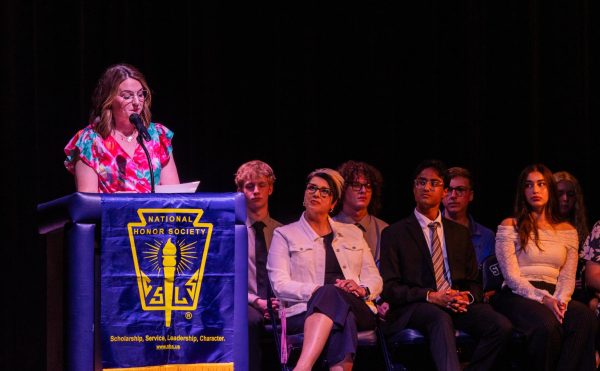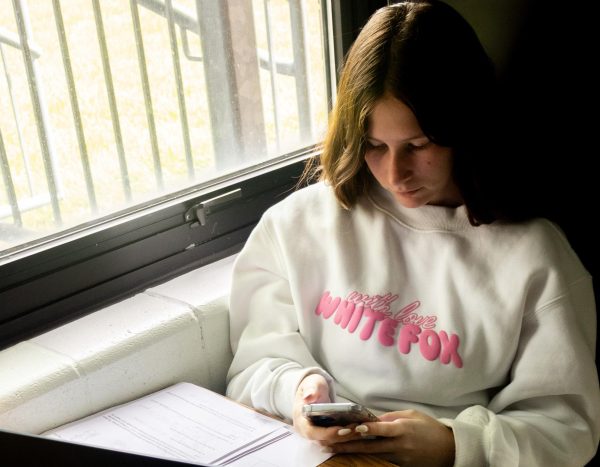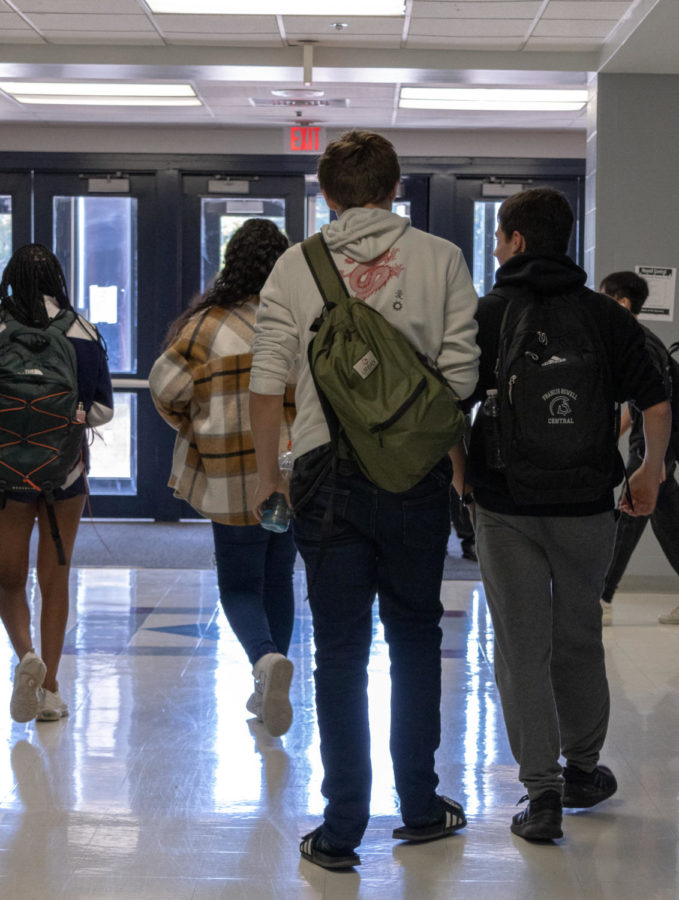Early Release Is No Longer Early
A dive into the recent early release bell schedule change from 1:20 to 1:35
Students rush out of the building to leave after a long day. The extended release leaves students tired and ready to go home.
High schools in the Francis Howell School District have returned to 1:35 dismissal on collaboration Wednesdays after the administration made two major changes for the 2021-2022 school year.
These two changes meant that high school students were released at 1:20 — 15 minutes earlier compared to previous years — and elementary schools had collaboration Wednesdays, meaning earlier dismissal for those students as well. Although this adjustment may have seemed appealing to students, events leading up to the revision had impacted the district negatively. This year, dismissal times on these days have been moved to their original places, leaving students wondering what caused the decision.
The Director of Secondary Education for our district, Dr. Luke Lammers, was involved in the decision-making process for both of these events.
“Due to budget cuts, they had to cut the recess paras from the elementary schools,” Lammers said. “And in doing so, they created a need for there to be collaboration time on Wednesdays at our elementary schools that already exists at middle schools and high schools.”
The elementary school staff typically had their collaboration time while the students had recess. When the position for recess paras was cut, the teachers lost their collaboration/plan time because they had to be the ones to supervise their students. Due to the fact that they needed a plan time of their own, collaboration Wednesday became a temporary routine for the elementary schools.
Dr. Suzanne Leake, former principal of Bryan Middle School and current principal of FHC, explains that although the modification didn’t directly impact our high schools, the matter of transportation still needs to be taken into consideration.
“In order to run the buses, you have to have so much time in between high school, middle school, and elementary,” Leake said.
This is a big aspect of both the temporary 1:20 release and the return to 1:35 release at the high schools. The decision to return to 1:35 release was official in late spring before the 2021-2022 school year had even ended. Unfortunately, although most people reacted indifferently or positively, there have been quite a few people who do not understand the reasons for one or both of these decisions and have therefore reacted on the more negative side of the spectrum. Once the change was announced, many students in particular were displeased with the very minimal information they were given.

“One of our jobs as administrators is to do everything we can to maximize learning time,” Dr. Lammers said. “It’s already so hard to teach all the standards and all of our curriculums in 169 school days.”
The general feedback from students was negative backlash from the added time. Many students wondered about the point of the change since it only add two minutes to each class. Two minutes added back to every class may not seem like a big difference, but it’s something that could help students to get the education that they need.
“When somebody tells me, ‘this is why we did that’, then usually I’m like, ‘okay, I can see it,’” Leake said. “I may not think it’s a big deal, but I can see it or may not approve of it. But at least I know what the reasoning was.”
Your donation will support the student journalists of Francis Howell Central High School. Your contribution will allow us to purchase equipment and cover our annual website hosting costs. FHCToday.com and our subsequent publications are dedicated to the students by the students. We hope you consider donating to allow us to continue our mission of a connected and well-informed student body.






